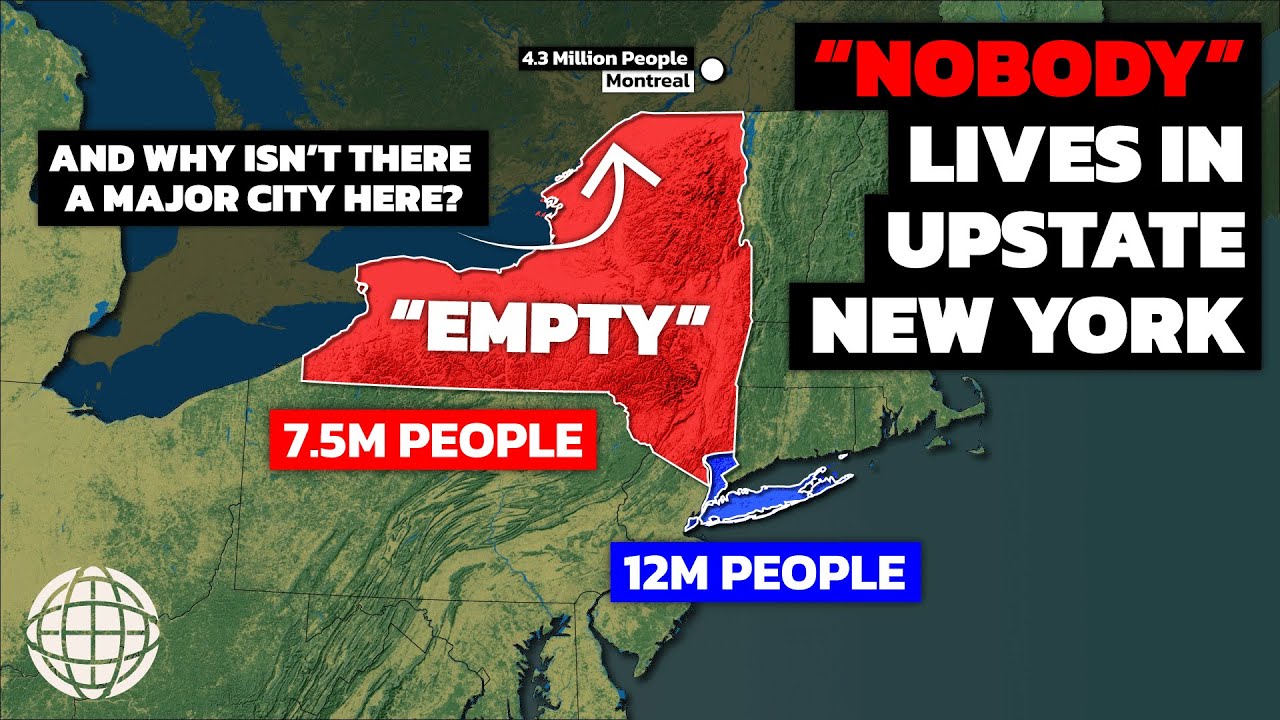New York State, renowned for its bustling metropolis, New York City, houses approximately 19.5 million people, making it the fourth largest state in the United States. However, an astonishing 62% of the state’s entire population resides in merely 4% of its land, primarily located in the far Southeast corner known as New York City. This intriguing fact raises the question: why don’t more people live in Upstate New York?
The Geographic Disparity of New York State
New York is a state of contradictions. It is often overshadowed by New York City, leading to the rest of the state’s landscapes feeling significantly empty. The reasons for this disparity are not only historical but also geographic.
The Historical Context
New York is one of the original 13 colonies of the United States, but its historical significance extends beyond that. The land was initially inhabited by various Indigenous tribes, most notably the Iroquois Confederacy. This alliance was known for their complex social structure and agricultural expertise, which greatly influenced the region.
As European settlers arrived in the early 1600s, starting with the Dutch establishing Fort Nassau (now Albany), the focus quickly shifted towards urban development on the coast. This transitioned into the establishment of New Amsterdam, which later became New York City after British control began in 1664.
Fast forward to the American Revolutionary War, and New York’s geography began to play a pivotal role. While New York City flourished as an economic hub attracting immigrants and serving as a critical port, Upstate New York remained relatively isolated.
Climate and Geography’s Role in Population Distribution
A significant factor contributing to the population disparity between New York City and Upstate New York is climate. Upstate New York experiences a demanding continental climate, with frigid winters and moderate summers. In contrast, New York City benefits from a milder coastal climate. Historically, the harsher climate in the north discouraged early settlement, and this pattern continues today with individuals increasingly attracted to the warmer, urban environments.
Moreover, the geographic layout of New York State adds complexity to this issue. The state can be divided into several distinct regions, each offering unique geographical features:
- Adirondack Mountains: This area is characterized by rugged terrain, dense forests, and numerous lakes, making it a hotspot for outdoor recreation but less appealing for year-round living.
- Hudson Valley: Stretching from Manhattan to Albany, the Hudson River is a critical waterway for trade and agriculture, supporting vibrant communities.
- Finger Lakes: Known for wine production, this region also contributes to the state’s water resources but lacks the urban development found in New York City.
- Great Lakes Region: Hosting both Lake Ontario and Lake Erie, this area is vital for commerce but remains sparsely populated.
Despite these geographical advantages, Upstate New York has not seen significant population growth compared to the thriving New York City metropolitan area.
Economic Influences
Throughout the 1800s and into the 1900s, the rapid growth of New York City as a global financial powerhouse attracted waves of immigrants and burgeoning industries. The city grew from 1.5 million residents in 1890 to over 3.4 million by 1900, in stark contrast to Upstate New York’s slower population increases.
Upstate cities, while rich in resources and agricultural land, simply could not compete with the economic opportunities presented by New York City. Many people were drawn to the diversity of the city’s job market, from finance to technology and beyond, leaving Upstate areas feeling sidelined in economic development.
The Impact of the St. Lawrence River
Interestingly, Upstate New York is home to one of North America’s largest rivers, the St. Lawrence, yet no major U.S. cities have developed along it. This absence is peculiar, especially since Montreal, located just downstream in Canada, boasts a population of over 4 million. The river’s significance was historically diminished by territorial tensions between the U.S. and British Canada, leading to fewer investments and less development along its banks.
The Erie Canal, completed in 1825, offered a more economical route for trade compared to the St. Lawrence River, which diverted much of the potential growth away from the latter and further into the economic opportunities provided by New York City.
Recent Trends and Future Possibilities
Despite New York City’s ongoing growth, there has been a noticeable trend of population decline in recent years. This shift could suggest a growing desire among residents to seek more affordable living options elsewhere in the state, potentially leading to a resurgence of population in Upstate areas as quality of life and housing becomes a priority.
Conclusion
New York State offers an impressive variety of geographical features and a rich historical background. Yet, the overwhelming population concentration in New York City leaves much of Upstate feeling underpopulated. The factors of climate, economic opportunity, and historical development have significantly influenced this unique demographic distribution.
This disparity raises intriguing questions about the state’s future. Will Upstate New York experience a revival? Or will the allure of urban living continue to dominate? The dynamics of population movement within New York State highlight the complexities of geographic and economic influences on community development.
Whether you are drawn to the bustling city streets or the tranquil north, New York’s diverse landscapes and rich history offer something for everyone. Explore more about New York’s geography and culture as you delve into the fascinating interactions between its various regions!
Want to learn more about geography and its intricate details? Stay tuned for more informative content from Geography by Geoff, and consider subscribing for more engaging videos! Let us know your thoughts about New York’s unique populations in the comments below!

